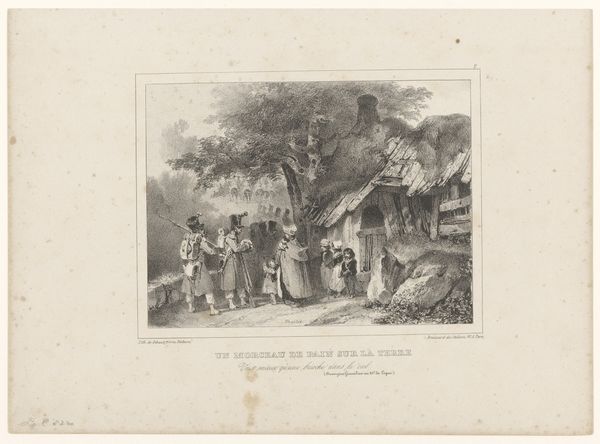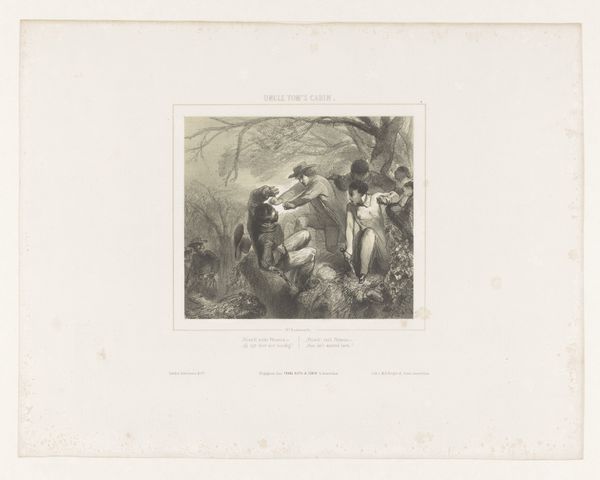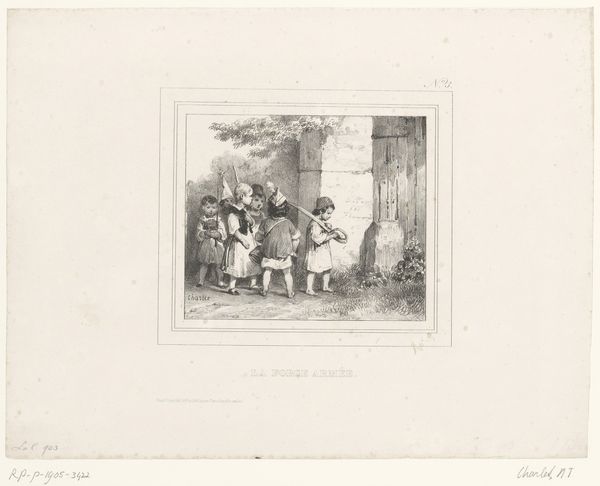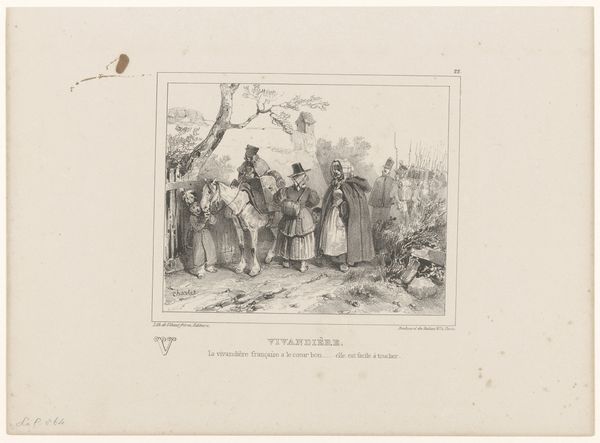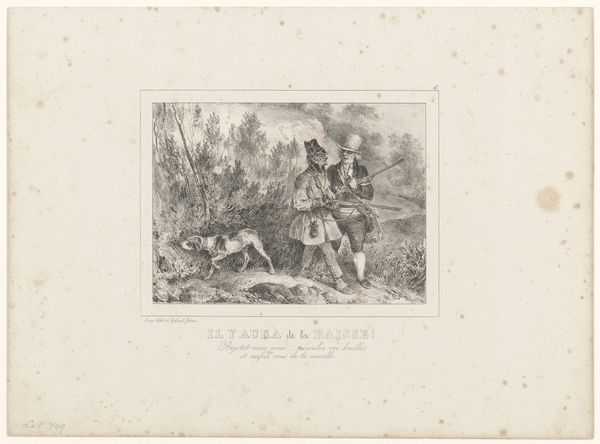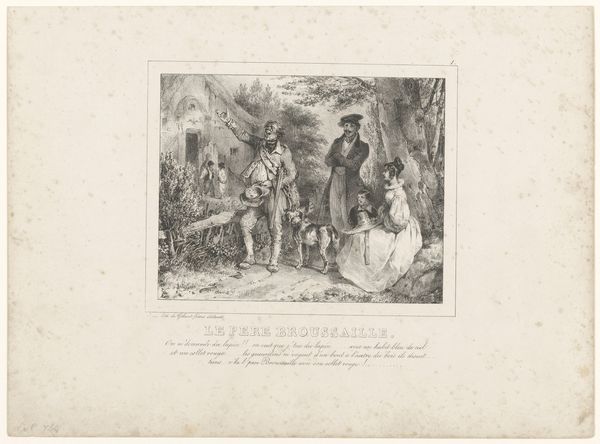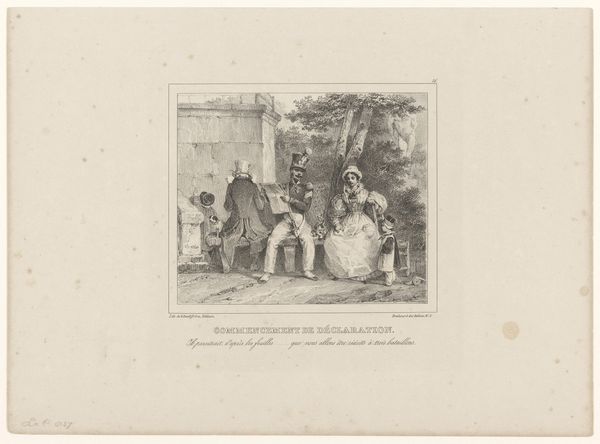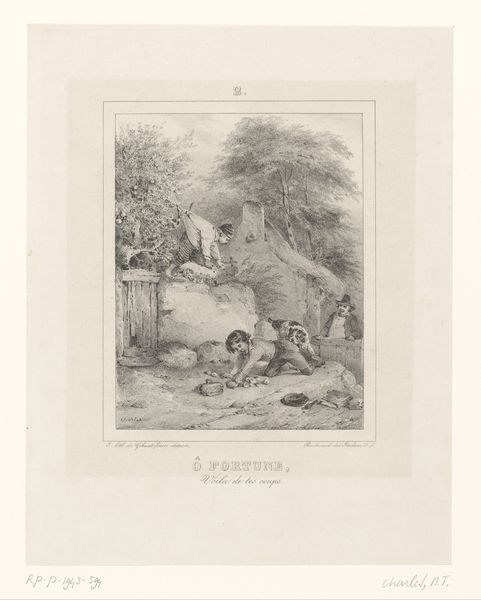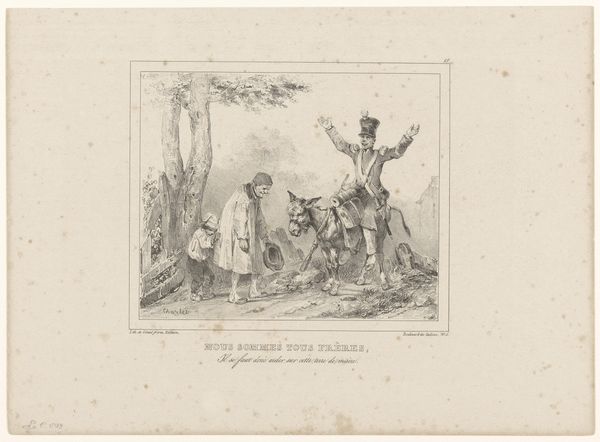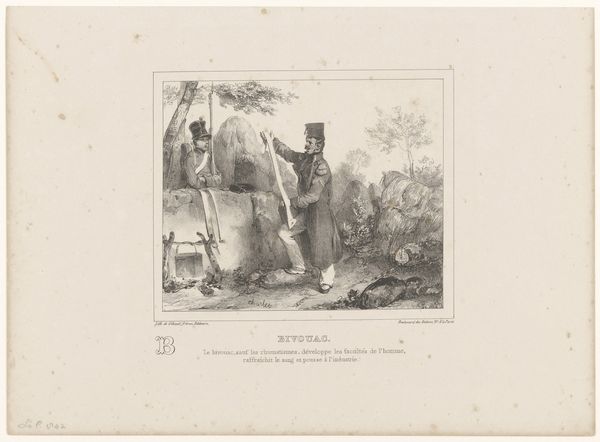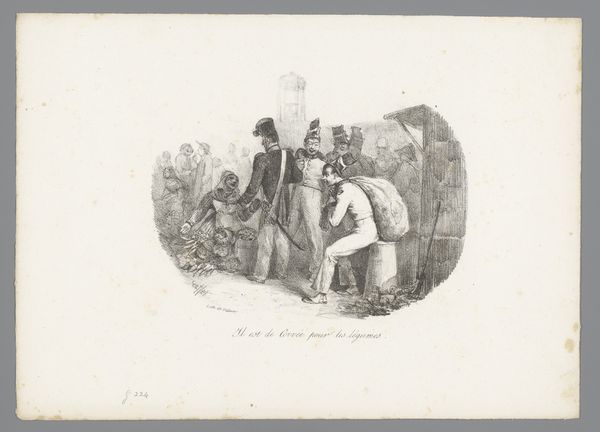
Jongen probeert een andere jongen over te halen soldaat te spelen 1830
0:00
0:00
nicolastoussaintcharlet
Rijksmuseum
print, engraving
#
narrative-art
# print
#
old engraving style
#
landscape
#
figuration
#
romanticism
#
genre-painting
#
engraving
Dimensions: height 338 mm, width 250 mm
Copyright: Rijks Museum: Open Domain
Curator: Let’s turn our attention to "Jongen probeert een andere jongen over te halen soldaat te spelen", an 1830 engraving by Nicolas Toussaint Charlet, currently held at the Rijksmuseum. I find the density of the print, its greyscale shades, quite compelling. Editor: My eye is immediately drawn to the hats. Such prominent, evocative markers of youthful ambition and fantasy play. Curator: Indeed. Charlet’s skillful use of hatching and cross-hatching creates a rich tonal range within the print medium. Look at how he suggests depth and form through variations in line density alone. Note that he focuses on childhood narratives that are very common in genre painting of the time. Editor: Those hats transform ordinary boys into symbols of potential and social aspiration. The taller hat almost seems to point toward a romanticized future. But look at the smaller figure. The symbol is more grounded. Even, slightly subversive, as if he will not allow himself to dream like the taller figure. Curator: It is as you mention. The figures and composition also convey a sense of dynamism and immediacy. It moves the narrative toward a commentary on the performative aspects of recruitment and the theatrics of war itself. The play of light and shadow is striking, accentuating certain forms while obscuring others, adding to the sense of ambiguity. Editor: Absolutely. And the image as a whole triggers an echo of similar visual themes – the allure of glory versus the potential for lost innocence. It suggests that these visual tropes are imprinted on culture itself, perpetually influencing our notions of war and youthful potential. Even today, symbols are being imposed from every direction. Curator: That’s a compelling point. I think analyzing it in the context of artistic tradition does offer us unique insights into both the form and content that inform our reading. Editor: Agreed. Delving into its symbolic landscape enriches our perception of both visual history and the narratives that repeat themselves.
Comments
No comments
Be the first to comment and join the conversation on the ultimate creative platform.
